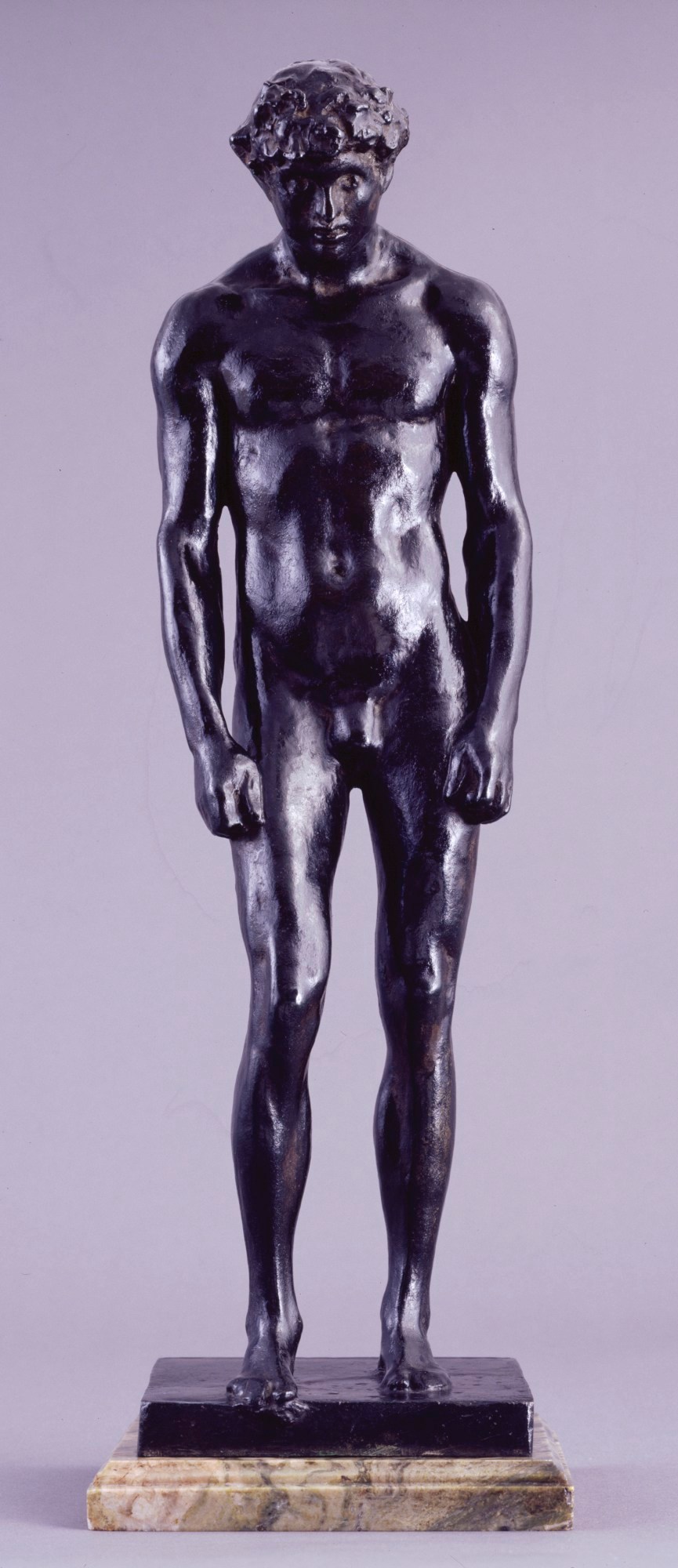
Lord Leighton PRA, Cymon, ca. 1884.
Bronze. 550 mm x 177 mm x 170 mm, Weight: 8 kg. © Photo: Royal Academy of Arts, London. Photographer: Paul Highnam.
This image is not available to download. To licence this image for commercial purposes, contact our Picture Library at picturelibrary@royalacademy.org.uk
Cymon, ca. 1884
Lord Leighton PRA (1830 - 1896)
RA Collection: Art
This bronze statuette was cast from a plaster sketch model for the figure of Cymon in Leighton’s painting ‘Cymon and Iphigenia’ (Art Gallery of New South Wales), which was exhibited at the Royal Academy in 1884. The subject is derived from a story in Boccaccio’s ‘Decameron’ (1350). A young nobleman called Galesus, was renamed Cymon (meaning ‘beast’) because of his gruff manner and sent to work on a farm. After some time he encountered the beautiful Iphigenia sleeping in the countryside. On falling in love with her, he resolved to give up his boorish ways.
In both the painting and model Leighton depicts Cymon with his head lowered in awe of the sleeping Iphigenia. However unlike this sculpture, the figure of Cymon in the painting is draped with a cloak and viewed in profile.
In an interview in The Studio (1893, p. 7) Leighton explained the role that his small sculptural studies played in the composition of his paintings:
‘“these models are clad with real drapery wetted to increase the effect of its fineness in proportion to the small scale of the folds” and are made only for the sake of ten minutes drawings, the serious study of the drapery being made from the living model or the lay figure. They help also to facilitate the disposition of the grouping, but are done with as soon as the cartoon is ready for tracing.’
Object details
550 mm x 177 mm x 170 mm, Weight: 8 kg
Associated works of art
2 results
Start exploring the RA Collection
- Explore art works, paint-smeared palettes, scribbled letters and more...
- Artists and architects have run the RA for 250 years.
Our Collection is a record of them.





